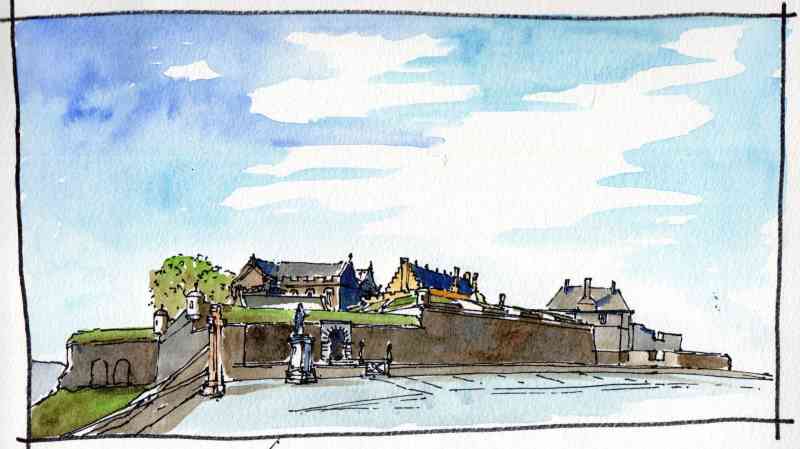Stirling Castle, at the top of the hill, is protected by much more sophisticated and intact defences. Low thick walls built to withstand cannon fire have projecting bastions for flanking fire to ensure that its entrance is well defended from the town. These defences were added between 1708 and 1714.
|
|
|


